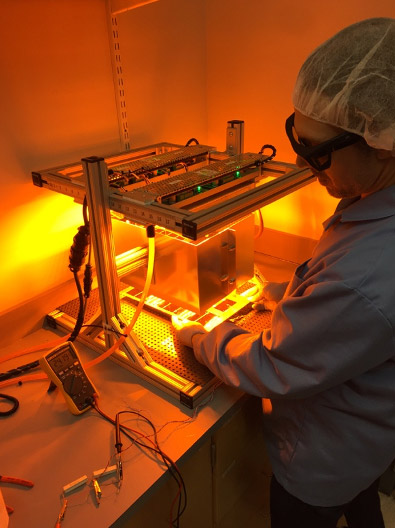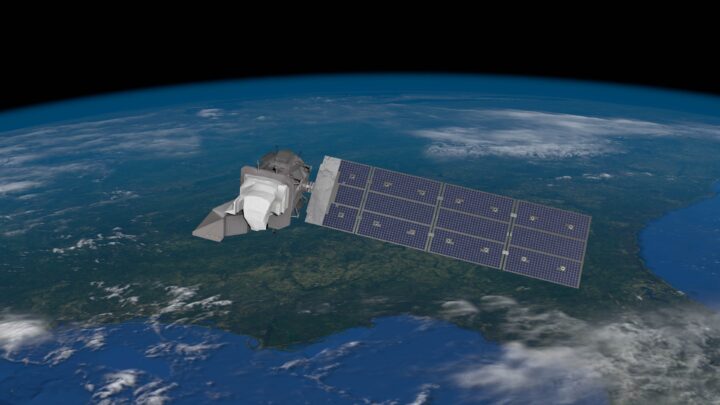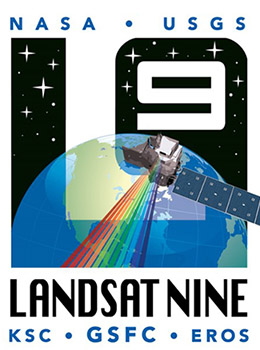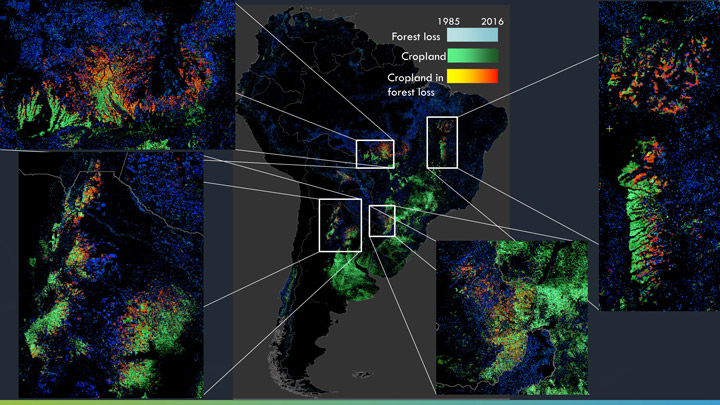

When asked how you get to Vandenberg Air Force Base, Boston University’s Brian Walsh and his Goddard Space Flight Center (GSFC) co-investigators are likely to reply “Practice, Practice, Practice” and “Teamwork, Teamwork, Teamwork.” They’ve been at this business for quite a while.
It all started in 2005, when GSFC astrophysicist Scott Porter told GSFC heliophysicist Michael Collier about a soft X-ray foreground signal coming from the vicinity of the Earth that astrophysicists were struggling to remove. The signal was interfering with their efforts to image distant stars and galaxies. Michael’s eyes widened in surprise – he immediately realized that heliophysicists could use this ‘unwanted’ signal. This soft X-ray signal was produced when solar wind ions collided with atoms in the Earth’s outer atmosphere, exchanging electrons. By carefully imaging it, they could paint the outline of the invisible magnetic bubble, or magnetosphere, surrounding Earth that shields us from the oncoming solar wind.
Colleagues at the University of Kansas ran simulations to calculate the strength of the X-ray signals, while Scott and Michael set out to find the right technology for the task. Working with partners at the University of Leicester in the United Kingdom, they realized that so-called ‘Lobster-eye’ optics could do the trick (see Figure 2). These special cameras could take wide field-of-view pictures of the X-rays.


Fast forward to the Decembers of 2012 and 2015, and Scott, Michael, and GSFC Post-Doc Brian Walsh are launching prototype ‘Lobster-eye’ telescopes on the DXL-I and DXL-II rocket flights from White Sands, New Mexico. It was near midnight on December 12, 2012. A few hundred feet away, the DXL sounding rocket had just lifted off from White Sands Missile Range carrying, as a secondary payload, the Sheath Transport Observer for the Redistribution of Mass or STORM instrument, the first wide field-of-view soft X-ray imager ever launched into space.
Michael remembers sitting hunched over a terminal, his index finger hovering nervously over the ‘self-destruct’ button. Should there be any evidence STORM was jeopardizing the success of the main DXL mission, the principal investigator would order Michael to shut it down. Thankfully, that order never came. Despite a bumpy launch and an equally bumpy crash landing, the instruments were recovered, undamaged, from the bone-dry desert plains of New Mexico. They had functioned perfectly throughout their brief flights into the nighttime sky. Michael wrote up the paper and it took pride of place on the cover of the journal.


These successful rocket flights laid the groundwork for Dr. Brian Walsh, now a professor at Boston University, to propose and win funding to fly the very same lobster-eye soft X-ray imager again. This time, it would be the main science instrument on the forthcoming Cusp Plasma Imaging Detector, or CuPID CubeSat. Brian’s first-year grad student Emil Atz inherited the CuPID design and some hardware from GSFC engineer Lisa Billingsley. He became responsible for taking the hardware from model to flight, spending days (and nights) in the machine shop and lab making parts, sometimes multiple times because he messed some up and had to remake them. Emil, now lead engineer, says “I remember wondering whether NASA would ever send something I worked on to space.” One year later he was putting the avionics and instruments into the chassis Lisa had designed and he had modified and built.

Systems engineering normally conducted by a spacecraft bus vendor was nearly entirely accomplished by the CuPID team. Although the avionics were purchased from a vendor, the design and integration of many elements were conducted by students and GSFC engineers. For example, the BU team built CuPID’s solar panels and the Merrimack team tested the settings for CuPID’s deployable radio antenna.

The COVID-19 pandemic caused a lot of problems. Early in the pandemic, Emil and crew drove down from Boston to GSFC to pick up the spacecraft and to keep the work on it going forward. Over the next year, he and colleagues came into the Boston University lab every day, testing the avionics, bus systems, software, and all three instruments. Discovering issues, he would contact the instrument or software teams, ask them what was going on, and conduct more tests and analysis until he figured out the problem. “It was fun – sometimes I felt like a detective,” Emil said. Over the past 4 years he and Professor Walsh have supervised 25 students as they worked on CuPID.
CuPID is now scheduled for launch as a rideshare with Landsat-9 from Vandenberg Air Force Base in California on September 27, 2021. The spacecraft has already been delivered and the team is getting ready to travel. But more about that later…

“Landsat 9 provides a critical extension of the Landsat data record for monitoring our food supplies and helping to inform and address crucial decisions in how we manage, grow and adapt our food production sustainably under a warming climate, with an increasing population and growing demand for food.”
– Chris Justice, NASA Harvest Chief Scientist, Program Scientist for NASA’s Land Cover Land Use Change (LCLUC) Program, Land Discipline Leader for the NASA Moderate Imaging Spectroradiometer (MODIS) and the Soumi-NPP VIIRS Science Team, co-chair of the GEOGLAM Initiative.

The next generation of Earth observation satellites is scheduled to launch in just a few short days. The ninth sensor in the NASA/USGS Landsat program will continue the mission’s critical work in monitoring how the surface of the Earth has changed in the near-50 years since the first Landsat satellite was launched. Landsat has enabled a number of applications in diverse fields including forest management, fire, and climate. The system has also found extensive use in monitoring global agriculture and food security applications.
Landsat revolutionized what it means to monitor agriculture, analyze crop conditions and estimate crop yields. Provided by advancements in satellite imagery and technology, the ability to remotely monitor crops over large areas and in difficult to access places on a regular basis has lowered on-the-ground labor requirements while simultaneously increasing the amount of analysis that can be performed. Advancements in spatial and temporal resolution, or how “zoomed in” and frequently the imagery is obtained, combined with new computing capabilities have created a variety of novel applications that have completely shifted what is possible in terms of agricultural monitoring and research.
NASA’s Role in Agriculture and Food Security
The first Landsat mission launched in 1972 was designed with agricultural monitoring as a key application for the Earth observations data that would be provided by satellite imagery. These initial Landsat observations were the primary tool for developing early programs for agricultural monitoring which laid the foundation for using satellite data to monitor where and when crops are growing, to observe crop condition as the growing season progresses, and to estimate crop yields and total production from space. As advances in technology and computing capabilities have increased exponentially in the last several decades, NASA has continued to play an important role in monitoring Earth’s agrifood systems.
Recognizing the growing need for a dedicated program focused on food production and access, NASA Harvest was established in 2017 to serve as NASA’s official Agriculture and Food Security program. NASA Harvest combines Earth observation (EO) data, machine learning, and the knowledge of agricultural experts around the world to better inform agricultural decision-making at every level. NASA Harvest partners have made significant use of the Landsat program’s rich data archives in terms of advancing research in mapping crop types, monitoring agricultural conditions, estimating crop yields, and analyzing how management decisions affect productivity and market responses across agrifood systems.
Senior members of the NASA Harvest team such as Dr. Chris Justice, Dr. Matt Hansen, and Dr. Eric Vermote have been at the forefront of EO data usage and Landsat applications for several combined decades. While the first Landsat images were simply photographic products, as digital data became available in the 1970s, Dr. Justice started working on data from the first Landsat satellite (ERTS-1) and subsequent missions for land cover classification. Dr. Eric Vermote has been responsible for developing the atmospheric correction procedures for Landsat, which have been adopted by the USGS for operational use, as they moved to distributing Applications Ready Data.
Reflecting on the program, Chris Justice said “The first Landsat mission was designed with agricultural monitoring as a key application. These early Landsat observations laid the foundation for using satellite data to monitor where crops are growing; crop condition as the growing season progresses; and estimating crop yields and total production from space. Landsat allowed the USDA to develop its Cropland Data Layer program. This approach has become a gold standard among agricultural ministries for annual identification of which crops are growing in their country.
Landsat Joined By Other EO Satellites
Over the years, Landsat capability has been bolstered by other moderate resolution Earth Observation (EO) satellites from the international community, starting with the French SPOT mission in 1986. In 2014, the European Space Agency began launching its Sentinel series of satellites in close collaboration with the Landsat mission, significantly increasing the frequency of observations and adding to the amount of EO data available for research and analysis. These two programs share in the benefits of providing free and openly available medium resolution EO data to the public. As crops change and develop rapidly throughout the growing season, timely and frequent observations are critical and Landsat 9 will play an important role in increasing the frequency of observations. Between two Landsats and two sentinels, available satellite data will provide almost daily observations to observe every field across the globe.
Despite some differences in spectral and spatial resolutions, the two programs complement each other particularly well especially for agricultural applications. A recent study co-funded by NASA Harvest and co-authored by researchers of the University of Maryland’s Global Land Analysis and Discovery (GLAD) group explores how the Landsat and Sentinel satellites compare in crop classification capabilities. This research found that medium-resolution imagery from Landsat 7 and 8 performs on par with the higher spatial resolution offered by the European Space Agency’s Sentinel-1 and Sentinel-2 satellites. Specifically, both sets of satellites are able to classify corn and soybean crops with accuracies above 94% and when their imagery was combined, the team was able to reach accuracy levels of 97%.
Dr. Matt Hansen has also used Landsat data and imagery to create the Global Forest Watch (GFW) product which provides an annual Landsat-based, global tree cover map allowing users to see how the global forest footprint grows and shrinks in different locales every year. Given the relationship between cropland expansion and deforestation, GFW’s annual tree cover data product allows for better analysis of how agricultural production drives forest loss.

Decades of Data Enabling Long Term Analysis
The Landsat program is especially unique and useful thanks to its longevity, providing researchers with an unmatched historical data archive. Collecting data for just under fifty years, the satellite mission has enabled longitudinal studies of agricultural change that would otherwise be impossible. One team based at Stanford’s Center on Food Security and the Environment (FSE) which includes NASA Harvest partners Dr. David Lobell, Dr. Jillian Deines, and Dr. Sherrie Wang, have demonstrated this by using Landsat imagery to greatly expand the temporal range of currently available U.S. crop maps. The country-wide crop maps currently produced by the USDA as part of the Cropland Data Layer (CDL), while very accurate, only include information on crops dating back to 2008. The FSE team makes use of the Landsat archive to bolster the existing CDL dataset and map corn and soybean production across the U.S. midwest, going all the way back to 1999.
Utilizing even more of the Landsat historical data, this team has also explored how agricultural irrigation has changed in the U.S. midwest over more than three decades. Led by Dr. Jillian Deines, FSE was able to create an annual series of maps showing irrigated cropland within the High Plains Aquifer in the Central United States from 1984 to 2017. This time series of irrigated maps proves vital in understanding how irrigated agriculture is changing in one of the most agriculturally productive regions on the planet, as well as building a strong base for further research into how water conservation can preserve natural aquifers while also increasing farmer profits.
Enabling New Landsat Applications
Landsat 9 provides a critical extension of this 50 year data record for monitoring our food supplies and helping to inform and address crucial decisions in how we manage, grow and adapt our food production sustainably under a warming climate and with an increasing population. Whether it is informing farmer decisions on management practices that support soil health, supporting transparent and stable agricultural commodity markets, providing early warning of impending crop shortfalls, supporting more efficient and effective agricultural insurance schemes, or tracking agricultural expansion, the Landsat program has had an enormous impact on how we understand farming and food security since its inception. With the launch of Landsat 9, new applications can be developed and the legacy of Earth observations for informed decision making continues on.
Visit Landsat Science to learn more about the Landsat program and the upcoming launch.